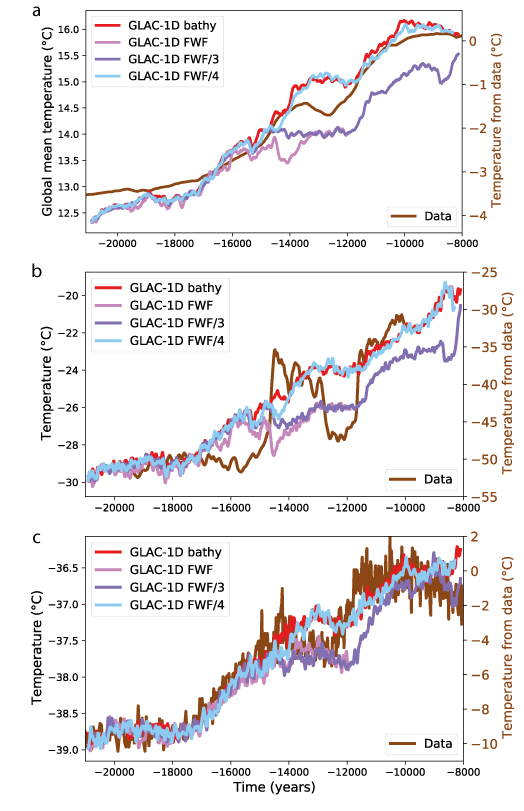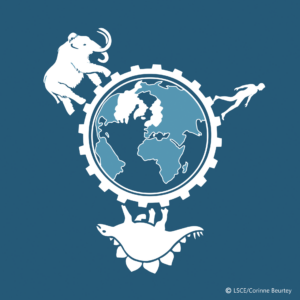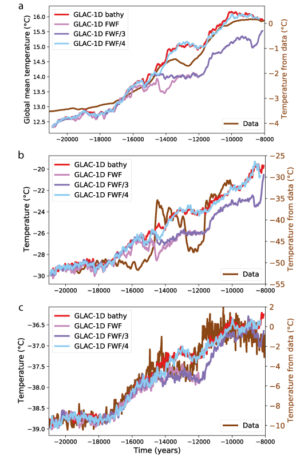Au cours de la dernière déglaciation, le climat évolue d’un état froid avec de grandes calottes de glace au Dernier Maximum Glaciaire (DMG, 21 kyr BP) à l’Holocène chaud avec des calottes de glace réduites à 9 kyr BP. La fonte des calottes glaciaires peut avoir un impact sur le climat de multiples façons : changements de topographie et d’albédo, de bathymétrie et de trait de côtes, et de flux d’eau douce (FWF). Dans le protocole PMIP4 (Paleoclimate Modelling Intercomparison Project – Phase 4) pour les simulations de déglaciation, ces changements peuvent être pris en compte ou non en fonction des choix du groupe de modélisation. En outre, deux reconstructions de calottes glaciaires sont disponibles (ICE-6G_C et GLAC-1D). Dans cette étude, nous évaluons tous ces effets liés aux changements de la calotte glaciaire sur le climat en utilisant le modèle iLOVECLIM de complexité intermédiaire.

Nous montrons que les deux reconstructions produisent le même réchauffement au premier ordre mais avec une amplitude différente (température moyenne globale de 3,9°C avec ICE-6G_C et de 3,8°C avec GLAC-1D) et une évolution différente. Nous obtenons un arrêt de l’augmentation de la température pendant l’inversion froide de l’Antarctique (ACR, de 14 à 12 kyr BP) similaire aux données proxy uniquement avec la reconstruction de la calotte glaciaire GLAC-1D. La prise en compte des changements de bathymétrie dans les simulations entraîne un refroidissement dû à une plus grande étendue de la glace de mer et à un albédo de surface plus élevé. Enfin, les flux d’eau douce entraînent une diminution de la circulation méridienne de retournement de l’Atlantique (AMOC), mais le timing des simulations ne concorde pas avec les données indirectes sur les changements de la circulation océanique. Cela remet en question le lien de causalité entre les flux d’eau douce reconstruits à partir de la fonte de la calotte glaciaire et l’affaiblissement de la circulation méridienne de retournement de l’Atlantique enregistré.
Auteurs : Nathaelle Bouttes, Fanny Lhardy, Aurélien Quiquet, Didier Paillard, Hugues Goosse, et Didier M. Roche


